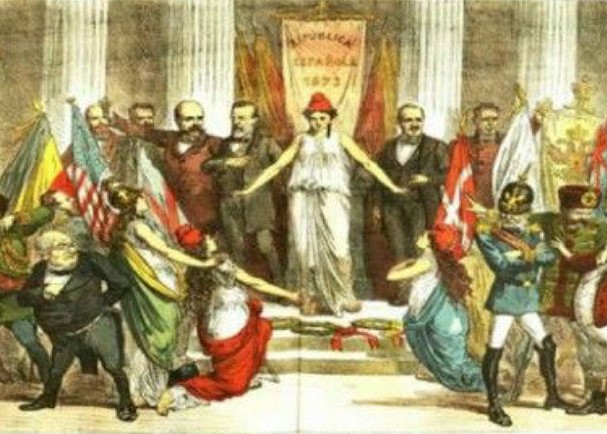After the abdication of Amadeo, the government called for new elections, the fourth time in just two years. Due to disagreements, not only the conservatives but also the radicals refrained from participating, resulting in a completely republican parliament.
However, only 40% of the electorate cast their votes. The fact that the parliament was now entirely republican did not mean there was unity. Even among the Republicans, there was serious division and polarisation, with different factions existing based on sometimes extravagant ideas.
In Spain, chaos reigned, and the country was on the verge of disintegration. In the North, the Carlist conflict flared up again, Barcelona was almost an autonomous city, and Andalucia was in a state of profound anarchy among the rural workers. Soldiers no longer obeyed their officers, and politically motivated murders were committed as expressions of social rebellion.
While Spain needed unity and a clear political direction above all else, the Republican factions in Madrid enthusiastically pursued their own political agendas. They wanted to do everything differently, but there was no idea of how to do it. Consequently, the First Republic came to an end after just eleven months and four presidents.
Alfonso XII
As had happened before, and would not be the last time, the chaos that arose among the left was the trigger for a right-wing power grab. However, it should be noted that the left did not inherit a flourishing country from the right. In 1874, a military coup took place, bringing a Bourbon, Alfonso XII, the son of Isabella II, back to the throne after seven years. Moreover, Alfonso was enthusiastically welcomed by the people and the majority of the army.
After five years of Republican rule, almost everyone agreed: a monarchy under the Bourbons is the only guarantee for stability and peace, and those who disagreed still preferred it over the chaos under the liberals. Thus began the period of the Restoration (1874-1923).


